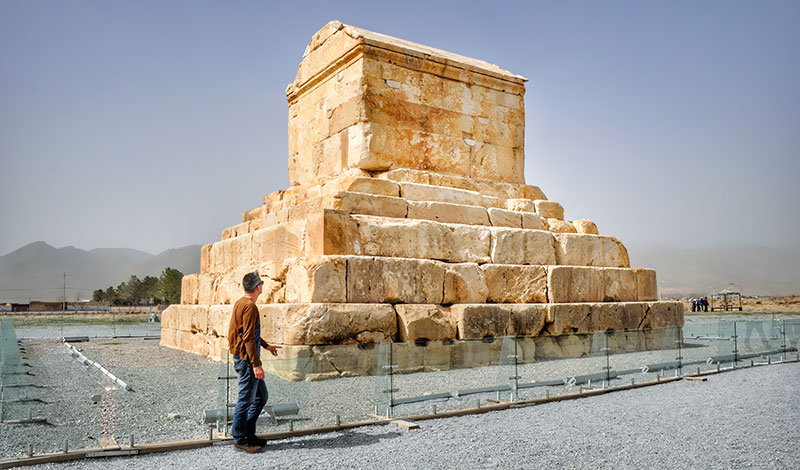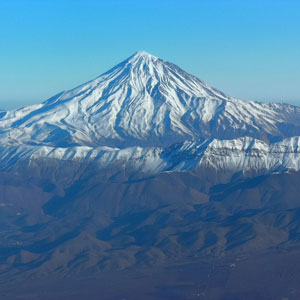 Signin with Google
Signin with Google Signin with Facebook
Signin with Facebook
 Places,History
Places,HistoryPasargadae keeps the Universal Heritage of Persian Empire

The glory of the Achaemenid Empire is often associated in mind with the magnificent city of Persepolis. Yet, the true and fundamental legacy of this empire lies into another site not far away: the ancient city of Pasargadae. The history of Pasargadae is intrinsically linked with Cyrus the Great's own story. 25 centuries ago, the founder of the Achaemenid Dynasty was leading the largest empire the world has ever known, stretching from Central Asia to the Mediterranean Sea.
The legacy of Cyrus the Great, a father more than a king
Thirty years of reign marked by a great tolerance, and based on magnanimity rather than force and coercion, as Cyrus has always respected the customs and faiths of all the lands he conquered. “Those who were subject to him, he treated with esteem and regard, as if they were his own children, while his subjects themselves respected Cyrus as their "Father".What other man but "Cyrus", after having overturned an empire, ever died with the title of "The Father" from the people whom he had brought under his power?", wrote the Greek philosopher Xenophon. The Public Hall of Pasargadae is known as The First United Nations Center.
The Great King's legacy and humble heart have survived throughout the centuries, being an inspiration for the powerful rulers from the fierce rival of the Achaemenid, Alexander the Great, to the father of the United States Declaration of Independence, Thomas Jefferson. Cyrus the Great gave the world what is known as the first Universal Declaration of Human Rights, found over a clay cylinder in the ancient city of Babylon.
Cyrus exquisite palaces and gardens
But it's in the Fars Province, in Central Iran, at the heart of the Morghab Plain that Cyrus chooses to establish his capital. Swept away by the winds, the remains of his ancient glorious city stand proudly enclosed by the mountains. This is where once, the King of the Four Corners of the World settle his private habitation, in a beautiful residential Palace, next to an impressive columned Audience Hall. The unique architecture blend influences, from nomads tribes to Greek stonemasons, and Assyrian palaces, representing Cyrus desire to embrace every culture.

A four-winged guardian figure of Cyrus sculpted into a bas-relief at the entrance of the palace, forever looking after its beloved capital. On top of a hill nearby, the fortress of Toll-e Takht, overlook the palatial complex. Back under the time of Cyrus reign, this era was lush and resplendent, as the King of Persia wanted his royal palaces to be surrounded by large beautiful gardens. A sophisticated irrigation system has been created to bring water, and thus turn those dry lands into an earthly representation of heaven. Pasargadae delicate gardens are considered the earliest example of the Persian "Chahar Bagh", a traditional and sophisticated form of Persian Gardens. Besides, it is referred to as the mother of Persian gardens in the Safavid period and the gardens of the Indian Royal Family.
Burial for the King of Persia
Nowadays, the most significant monument of this ensemble is without a doubt the humble mausoleum of Cyrus the Great himself. This high and narrow limestone tomb stands on several rows of stairs, somehow remembering the architecture of the Elamite Ziggurats. The sober monument is only embellished by a rosette over its entrance door and needs nothing more to inspire the visitor with awe and admiration.

Two centuries after Cyrus' death, and six years after the unfortunate sack of Persepolis by Alexander the Great, this latter came to Pasagardea to pay homage to the King of Persia. The story recalls that the Greek king was horrified to discover the pillage of the tomb, and ordered its renovation. Inside the seventh floor of the tomb, which was called treasury, Cyrus’s golden bed contained King’s mummified body along with several precious ornaments and many jewels were found. But the most important thing resting there cannot be stolen and will remain for eternity: the legacy of the world's greatest empire and king, born 2500 years ago in Persia.


